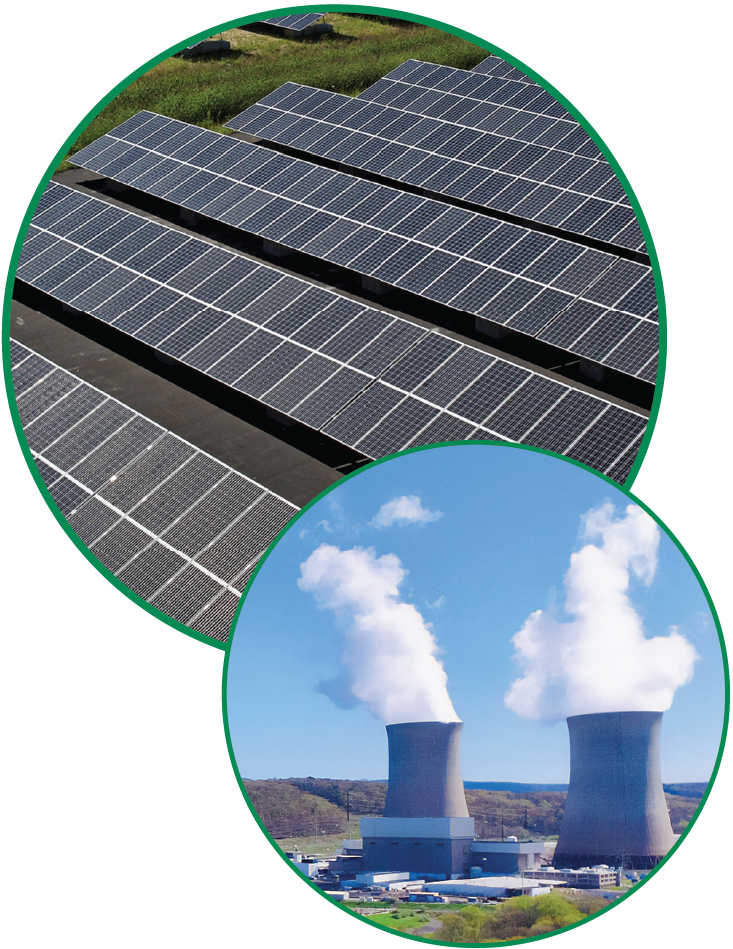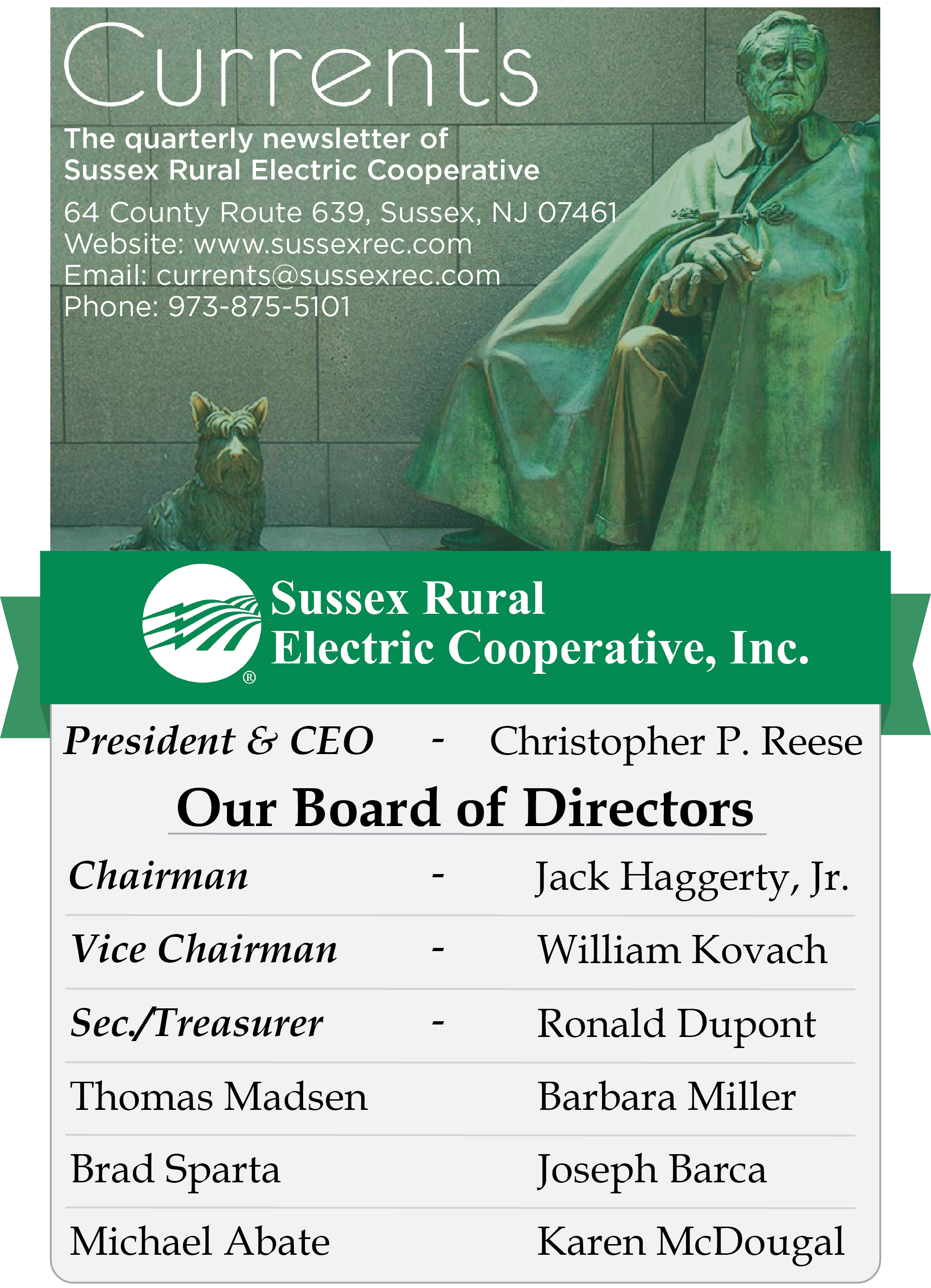To view the full print/pdf version of Volume 1, Issue 1 of Currents, click here
For previous issues of Currents, visit our Currents Library
Reliability Crisis
By: Steve Sokolowski, Marketing Associate
Email: ssokolowski@sussexrec.com
 Today, many young people are facing a crisis of confidence in the world around them - a sense of uncertainty about the future that we and our children will live in. The reliable facets of life from previous generations don’t seem so reliable anymore, especially when the effects of global climate change are factored in.
Today, many young people are facing a crisis of confidence in the world around them - a sense of uncertainty about the future that we and our children will live in. The reliable facets of life from previous generations don’t seem so reliable anymore, especially when the effects of global climate change are factored in.
Whether you believe in manmade climate change or not, there are real and measurable changes that have taken place over recent decades in the Earth’s climate and weather patterns, and I think it would be valuable for me to share my perspective as a young adult working in the energy field. I am all too familiar with this sense of uncertainty felt by many in my age group and younger. Since joining Sussex Rural Electric Cooperative in 2018, I have learned a lot about the multiple aspects of this issue that aren’t commonly considered.
Some of the advancements in renewable energy generation over recent decades have been astounding which has given many people hope that fossil fuels can be completely replaced with renewable power. In a perfect world I would love to see this happen, but we are held back by the material conditions of our all-too-imperfect world.
Utilities’ power mixes are selected to ensure the greatest reliability possible. Reliability is key to stability. A lack of reliable power can cause frequent blackouts that would leave many of us, especially in underserved areas, cut off from the necessities of modern life.
Solar power and wind power certainly will hold an important place in the future of our world’s energy mix, but they also take up a lot of physical space and can only operate at full potential in certain locations. They are also intermittent sources of power, meaning that if the sun isn’t shining or the wind isn’t blowing, these technologies will not be able to generate the power needed to meet demand.
In addition, there is no “carbon neutral” method of producing green technologies or recycling them. The manufacturing process for solar panels and wind turbines, along with electric vehicles, involves mining for materials and factory production which mostly takes place in parts of the world that uses electricity generated through coal or gas. All of these technologies offer ways to reduce your own carbon impact, but they have a “hidden footprint” that many of us don’t consider.
So we find ourselves in a tough situation. Extreme weather events are occurring at an increasing frequency, which strains existing electric infrastructure. At this same time, electric demand is only going up – made worse by extreme temperatures that drive up heating and cooling costs. What can be done about this if we phase out reliable, but harmful, fossil fuels in favor of imperfect, but less harmful, renewable energy sources? Even though the US is the second highest carbon producing country in the world, we share one atmosphere with every other nation. Hasty policy decisions on energy may end up hurting our citizens more than they can ever contribute to solving the climate crisis.
I have offered enough doom and gloom for one article. As someone who cares about environmental justice, I am not here to say that green technologies should not be developed and become a larger part of our grid. But I must go with the word of energy experts who urge us to be realistic in the timing of the changes we make. Sustainability must always be balanced with reliability or else our surprisingly delicate electric grid will not be able to power the millions of people who rely on electricity for their basic needs.
I believe that electric co-ops, like SREC, are uniquely poised to take an objective stance on this issue. Unlike investor-owned utilities that have profits on the line when changes like these are made, co-ops are not-for-profit and are solely focused on how to best serve the needs of their members. This includes a focus on maintaining and upgrading their systems and staying in-the-know about new technologies.

A Reliable Power Mix - Priority #1
Reliability is key. As NRECA CEO Jim Matheson said in his address before the U.S. Energy Association’s State of the Energy Industry Forum, “We talk about all of the change in the energy industry, but I’ll tell you something that hasn’t changed for us—job one is keeping the lights on. I fear that people in the policy world are not recognizing the importance of reliability.”
SREC ensures reliability with its diverse power mix that takes advantage of nuclear and hydropower’s capacity for productive power. With these two sources, plus additional nuclear and hydro power from the open market, SREC is almost 80% carbon free!
One way that SREC ensures reliability for your power is through our diverse power mix. SREC makes use of some natural gas and coal through a portion of the energy it purchased from the open market. But overall, we have a nearly 80% carbon-free, and still reliable, power mix. This is achieved through hydroelectric power obtained from the Raystown Hydroelectric Plant and Niagara Power Project and nuclear power from the Susquehanna Steam Electric Station (which provides the majority of our electricity), plus additional nuclear and hydropower from the open market.
While nuclear power’s reputation is not as strong as solar or wind, proper maintenance of nuclear power plants lets them operate safely to the point that there has not been a major incident in a US nuclear power plant since Three Mile Island in 1979. It is also a the cleanest form of energy we have (being a carbon-free source) and is much more productive than others. Nuclear power’s capacity factor is much higher than other forms of energy production, especially when compared to other carbon-free sources (see the chart below).

A power source’s “Capacity Factor” is the measurement of how often a plant can run at maximum output. This is a primary measure of reliability.
This chart from the U.S. Energy Information Administration shows that in 2021, nuclear power had a capacity factor of 92.7%. This means that on average, U.S. nuclear power plants were able to operate at full output 92.7% of the time. Power sources with higher capacity factors are able to provide more consistent and reliable power, while those with lower capacity factors tend to be intermittent sources of power generation, such as solar and wind.
Our government is looking for ways to decarbonize, but we are seeing many nuclear power plants across the country shut down despite the clean energy that nuclear power provides. The simplest solution is often the best. Nuclear power, when used in conjunction with other energy sources, can take care of our reliability problem and give time for other energy alternatives to better develop. There will still be a future. We just need to make sure we build it in a smart way that is most beneficial to us all.


